Duane Spurlock's Blog, page 3
July 25, 2013
Work in Progress: Fogg and Thalcave
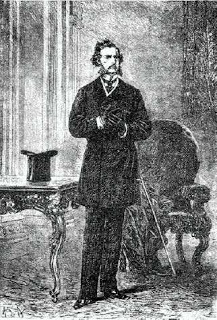 When Time doesn't work, the world can be a frightening place. Two men, so very different: one an exemplar of civilized upper-class Britain, punctual, whose behavior is regulated as the ticking of a clock; the other a giant from the wilds of Patagonia, impulsive, a near-savage whose life has been given over to adventure. Two men, so very different: yet united by the great sorrows their lives have brought them. Their conceptions of the world are soon to be rent asunder as the laws of reality are shredded before their eyes. Work in Progress: untitled It's sad when a story doesn't have a name. Actually, this still-in-progress story has about four tentative titles. I simply can't seem to settle on one yet. In honor of FarmerCon VIII, which launches today at PulpFest 2013, today's excerpt features two characters from the works of Jules Verne. FarmerCon VIII celebrates the works of P.J. Farmer, particularly his Wold Newton-associated stories, essays, and novels, which were based on the conceit that all the world's popular heroes were related by a bloodline that had mutated thanks to exposure to a meteorite that fell in England. Specifically, in Wold Newton. One of Farmer's novels features the lead character from Verne's most famous novel, Around the World in 80 Days. Farmer's novel, The Other Log of Phileas Fogg, purports to reveal the secret story behind the events Verne reported. The following story features Fogg in action many years after the closing of Verne's novel. The other character, Thalcave, is hardly known at all except by dedicated Vernians. Thalcave is from Patagonia, and appears as a secondary character in another around-the-world adventure tale, The
Children of Captain Grant
. This novel differs significantly from Around the World in 80 Days, because the characters circumnavigate the globe by following a single line of latitude as they hunt for the survivors of a shipwreck. The following excerpt doesn't offer a lot of action and adventure, but it establishes a melancholy tone that influences the plot a great deal in the events that follow this scene. Around the World in 80 Days has experienced success on the stage and, quite dramatically, in film. So to borrow a Hollywood term, you might say it's raw footage. Therefore, consider reading the scene below as an opportunity to see the creative process at work, if you will: the prose that follows is still rough draft, and one day you can compare it to the final polished version that will be its published form. This story is one of two that will be vying for my attention once I complete Space Detective. When it's done (and finally receives a title), it will join my other works at Amazon and Smashwords. Now, let your journey with Fogg and Thalcave begin . . . Fogg and Thalcave Time, in the mind of Phileas Fogg, drew the boundaries of the Earth. It had done so when he circumnavigated the world so famously within eighty days. Correction: seventy-nine days. It was still true today—thirty-five years later. But the world was a different place these days for Fogg than it had been then. For Fogg was no longer a part of the world. He had removed himself from its definition when he realized time no longer defined his boundaries as it did so for other people. The realization arrived through a gradual progress, like the growth of a sprig to the unfolding of its flower into bloom. From year to year, the impulsive Passepartout lost more of his agility. His nimble manservant eventually retired to France, still irascible, but far slower. Fogg’s great love, Aouda, whom he found during his remarkable voyage, lost the elasticity of her limbs—her flesh grew heavier, her jowls filled, her hair lost its brilliant black gloss and faded to grey. Yet her eyes never lost their shine, her smile would burst into life at a moment’s surprise. But by 1897, the fire of life had dimmed, and an ashy pallor had dulled the glow in her cheeks. She had grown quiet, and the flash in her eyes had eventually done most of her communicating. That and the long, building squeeze her hand would give his as he would sit beside her in the early evenings before she retired for the night. He could feel her grip now, tight in his hand. Fogg’s attention had dropped into a somber, interior space, and the unexpected recollection—the surprising physical remembrance of Aouda’s hand in his—brought a quick return of alertness to him of his surroundings. He noticed his left hand still was curled as though it were wound around another, smaller hand. Fogg reached, gripped the rail before him. The cold of the metal displaced the previous sensation that had haunted his fingers. “Are you well, my friend?” The voice came from Fogg’s left: An unusually tall, robust man with a stolid expression Fogg had come to find both familiar and comforting. “All is well, Thalcave,” Fogg reassured his companion. The Patagonian turned from Fogg and, like the renowned traveler, gazed out at the swells of water through which their craft surged. Light fretted and spangled across the rolling seas in a sort of frenetic ballet that flashed in a grand display, then would disappear as a wave turned and swept past. “There is no shame in recalling the fond moments,” Thalcave said. “I have no shame regarding Aouda.” Thalcave watched the light and water dance their singular waltz a few moments before replying. “Nor would any man say you should or would, my friend. But there is no reason to fear recalling those we have loved.” He glanced at Fogg without turning his head. “We are men, you and I. We do not fear love.” He ducked his head a bit. “There is no shame in grieving its loss. For if our love is lost to us, and it is not worth our grief, was it truly love? And if we have had true love, and have lost it, we are less the men if we do not acknowledge its value and its loss.” The two were quiet. Two minutes and thirty-six seconds passed before Fogg responded: “I am honored to know you, Thalcave.” “The honor is mine, my friend.” A number of boats had come into sight, and their presences on the water disrupted the dramatic displays of light on the sea surface. A shrill whistle sounded. “We’ll soon be landed,” Thalcave said. “Let us retrieve our bags.” Fogg moved from the rail. “Another step for another journey.”
When Time doesn't work, the world can be a frightening place. Two men, so very different: one an exemplar of civilized upper-class Britain, punctual, whose behavior is regulated as the ticking of a clock; the other a giant from the wilds of Patagonia, impulsive, a near-savage whose life has been given over to adventure. Two men, so very different: yet united by the great sorrows their lives have brought them. Their conceptions of the world are soon to be rent asunder as the laws of reality are shredded before their eyes. Work in Progress: untitled It's sad when a story doesn't have a name. Actually, this still-in-progress story has about four tentative titles. I simply can't seem to settle on one yet. In honor of FarmerCon VIII, which launches today at PulpFest 2013, today's excerpt features two characters from the works of Jules Verne. FarmerCon VIII celebrates the works of P.J. Farmer, particularly his Wold Newton-associated stories, essays, and novels, which were based on the conceit that all the world's popular heroes were related by a bloodline that had mutated thanks to exposure to a meteorite that fell in England. Specifically, in Wold Newton. One of Farmer's novels features the lead character from Verne's most famous novel, Around the World in 80 Days. Farmer's novel, The Other Log of Phileas Fogg, purports to reveal the secret story behind the events Verne reported. The following story features Fogg in action many years after the closing of Verne's novel. The other character, Thalcave, is hardly known at all except by dedicated Vernians. Thalcave is from Patagonia, and appears as a secondary character in another around-the-world adventure tale, The
Children of Captain Grant
. This novel differs significantly from Around the World in 80 Days, because the characters circumnavigate the globe by following a single line of latitude as they hunt for the survivors of a shipwreck. The following excerpt doesn't offer a lot of action and adventure, but it establishes a melancholy tone that influences the plot a great deal in the events that follow this scene. Around the World in 80 Days has experienced success on the stage and, quite dramatically, in film. So to borrow a Hollywood term, you might say it's raw footage. Therefore, consider reading the scene below as an opportunity to see the creative process at work, if you will: the prose that follows is still rough draft, and one day you can compare it to the final polished version that will be its published form. This story is one of two that will be vying for my attention once I complete Space Detective. When it's done (and finally receives a title), it will join my other works at Amazon and Smashwords. Now, let your journey with Fogg and Thalcave begin . . . Fogg and Thalcave Time, in the mind of Phileas Fogg, drew the boundaries of the Earth. It had done so when he circumnavigated the world so famously within eighty days. Correction: seventy-nine days. It was still true today—thirty-five years later. But the world was a different place these days for Fogg than it had been then. For Fogg was no longer a part of the world. He had removed himself from its definition when he realized time no longer defined his boundaries as it did so for other people. The realization arrived through a gradual progress, like the growth of a sprig to the unfolding of its flower into bloom. From year to year, the impulsive Passepartout lost more of his agility. His nimble manservant eventually retired to France, still irascible, but far slower. Fogg’s great love, Aouda, whom he found during his remarkable voyage, lost the elasticity of her limbs—her flesh grew heavier, her jowls filled, her hair lost its brilliant black gloss and faded to grey. Yet her eyes never lost their shine, her smile would burst into life at a moment’s surprise. But by 1897, the fire of life had dimmed, and an ashy pallor had dulled the glow in her cheeks. She had grown quiet, and the flash in her eyes had eventually done most of her communicating. That and the long, building squeeze her hand would give his as he would sit beside her in the early evenings before she retired for the night. He could feel her grip now, tight in his hand. Fogg’s attention had dropped into a somber, interior space, and the unexpected recollection—the surprising physical remembrance of Aouda’s hand in his—brought a quick return of alertness to him of his surroundings. He noticed his left hand still was curled as though it were wound around another, smaller hand. Fogg reached, gripped the rail before him. The cold of the metal displaced the previous sensation that had haunted his fingers. “Are you well, my friend?” The voice came from Fogg’s left: An unusually tall, robust man with a stolid expression Fogg had come to find both familiar and comforting. “All is well, Thalcave,” Fogg reassured his companion. The Patagonian turned from Fogg and, like the renowned traveler, gazed out at the swells of water through which their craft surged. Light fretted and spangled across the rolling seas in a sort of frenetic ballet that flashed in a grand display, then would disappear as a wave turned and swept past. “There is no shame in recalling the fond moments,” Thalcave said. “I have no shame regarding Aouda.” Thalcave watched the light and water dance their singular waltz a few moments before replying. “Nor would any man say you should or would, my friend. But there is no reason to fear recalling those we have loved.” He glanced at Fogg without turning his head. “We are men, you and I. We do not fear love.” He ducked his head a bit. “There is no shame in grieving its loss. For if our love is lost to us, and it is not worth our grief, was it truly love? And if we have had true love, and have lost it, we are less the men if we do not acknowledge its value and its loss.” The two were quiet. Two minutes and thirty-six seconds passed before Fogg responded: “I am honored to know you, Thalcave.” “The honor is mine, my friend.” A number of boats had come into sight, and their presences on the water disrupted the dramatic displays of light on the sea surface. A shrill whistle sounded. “We’ll soon be landed,” Thalcave said. “Let us retrieve our bags.” Fogg moved from the rail. “Another step for another journey.”
Published on July 25, 2013 19:02
July 23, 2013
Work in Progress: Space Detective
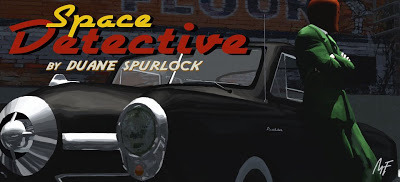 In the middle of the 1950s, the world isn't quite what you'd expect. World War 2 didn't end with a victory, but with a truce.The Empire State Building stands proudly in a city named New Angouleme.There's plenty of friction among the Police ranks between the Irish and the Mohawks.And don't discount the discord sown by the Vikings . . . The past couple of years, you may have been teased by illustrations posted on Facebook by
Mike Fyles
for a story named Space Detective. Mike is an artist who has worked on a number of books, including some Spider-Man and Iron Man covers for Marvel Comics. I've been working on the Space Detective novel in fits and starts the past two years. It's more than 50 thousand words at this point, and is the longest story I've written thus far. There are still more words to write before it's completed, but finishing this tale is my first priority. I would say, "I plan to have it done by the end of the year," but over the years I've learned that making a plan is a way of telling God a joke. So I'll say, "I hope to have it done by the end of the year." Then it will join my other work at Amazon and Smashwords. Many thanks to Mike for his cleverness and amazing patience. Here is the initial entry in the Portfolio of Progress. It begins with the first two sections of Space Detective. I hope you enjoy the story . . . Chapter One Despite the Model 6’s well-documented flaws, the Space Detective preferred the Model 6 Rigelian Hand Zapper to the Model 8. He found it a better balanced blaster that fit his hand just so. The Model 8 felt barrel-heavy to him. And the way the 8 molded itself to his hand was very unsatisfying—and a little disturbing. (More than once I heard him say, “I just don’t know what they were thinking when they started using those Nevian Octo-ambient grips on the Model 8. When I let go of the gun, it wouldn’t let go of me. Had to pry it off my fingers.”) So the Space Detective radiated absolute confidence as he leveled his Model 6 at Ronnie Roquette, whose recent activities might better be described as invasion assistance rather than mere smuggling. But although Ronnie was staring down the cannon-sized blow hole of a lethal hand blaster, his face began to glow with confidence. Uh oh. I alerted the Detective: <<Your helmet must have a breach—short-wave Confidence radiation is infecting Ronnie. Better shoot fast.>> The Space Detective pulled the Zapper’s trigger, and the Model 6 demonstrated one of its flaws: Instead of firing with a warm and satisfying POM, the charge drum flew to the right with a PLING, leaving the Detective gripping a gun frame with a barrel attached. As usual, he was not at a loss for words—at least, one word: “Poot!” As the drum escaped the frame, its locking pin had shot forward and struck Ronnie in the face. “Hey! That coulda put out my eye!” Radiated by confidence leaking from the faulty helmet, the smuggler charged, arms extended. The Detective’s left forearm batted aside Ronnie’s right arm. He brought up the handgun and wobbled the smuggler by rapping Ronnie’s collar bone with its barrel. The pistol, even without the drum, weighed enough to stun the outlaw. The Detective lunged forward, smacked Ronnie in the face with the front of his helmet and dropped him to the floor. Even unconscious and battered, Roquette’s features suggested an attitude of easy accomplishment. “Gotta get this helmet patched,” the Detective said. <<The Studie is coming around the corner,>> I reported. I maintained a telepathic link from the office with the Detective. It would be a misnomer to say I manned the office, as my genetic forebears are Plutonian—I sat in a container lined with dry ice and kept operations flowing while the Detective handled the leg work. After all, he had legs. The Detective dropped Ronnie’s sidearm into a coat pocket, picked up an egg carton-sized container from the floor with one hand and with the other slung Ronnie’s inert form over a shoulder. Grit cracked under his Florsheims as he crossed the vast concrete floor to the open door. As he stepped out from one of hundreds of warehouses lining this part of the Great Mohegan River, a car skidded to a stop before him: a modified 1950 Studebaker Commander Starlight Coupe, Milky Way black. The passenger door opened, and he plopped Ronnie into the seat, closed the door. He got into the driver’s seat—because I had directed the auto’s robot to the door, no one was actually already in the seat—and set the carton between him and Ronnie’s slumped form before putting the Studie in gear and driving off. Chapter Two At the office—a second-floor walk-up over a tobacconist’s shop that ran numbers from the back room—the Detective opened the top drawer for one of three filing cabinets, touched the Containment tab of a file folder.He moved Ronnie, still on his shoulder, closer to the drawer, and the smuggler was sucked into the Containment folder like something in a Tex Avery cartoon. The Detective closed that drawer, opened another and manipulated the Evidence tab, and the egg carton likewise slurped into the cabinet like a wet noodle. From a third drawer, the Detective opened a Workroom folder and stepped in. As every school boy knows, as New Angoulême had spread horizontally across the landscape since the arrivals of Giovanni da Verrazzano and Henry Hudson, the search for more space had eventually led to the creation of the skyscraper to exploit vertical space. The technologies the Detective relied on let him use the space between spaces—much as a tesseract is a four-dimensional cube, the Detective employed science that allowed him to use rooms within rooms that weren’t even visible from outside. Some of the spaces within the file cabinets’ folders were larger than the office within which they sat. Sitting sealed in a dry ice container all day gave me the time to think about these things. Luckily, I didn’t get headaches. In the Workroom, the Detective found the fault in the helmet that had allowed Ronnie Roquette to be contaminated during their little skirmish. He returned to the office proper after retrieving and donning a fresh helmet from Storage. Just in time. The office door opened and revealed Chief Inspector Jonathan Brewster Uncas. His figure briefly fuzzed around the edges as he stepped over the threshold, and Uncas shook for a moment as from a chill. The fuzz and chill resulted from the transport process that moved any visitors from the second floor walk-up to the actual location of the Detective’s office—using the same tesseract-like science, the office was Neither Here nor There, but “Nere,” as the Detective described it. Just by pressing a switch, the New Angouleme office could appear to be empty, and the office in Hong Kong or Paris would appear to be occupied. Whoever crossed the threshold remained unaware that he had been transported from one reality to another. It was one of those little secrets we kept that made our work tricky. “Always cold in here,” Uncas muttered. His name was pulled from Mohegan history, but he actually belonged to the Pequot tribe; still, both were Algonquian, and Uncas wore on the lapel of his topcoat the traditional black feather pin of the Algonquian nation. The police department ranks were filled with Mohawks and Irish, and the newspapers occasionally ran a story about dissent in the precincts caused by Uncas—or one of the other officers from a competing tribe—rubbing someone in uniform the wrong way. He didn’t doff the non-standard-issue black beret. “Where have you been tonight?” he asked. The Detective moved casually, sat in the captain’s chair behind his desk. His helmet was opaque, therefore it would do no good to smile, so he tried to put a smile in the sound of his voice. “Why should I have been anywhere but here?” Uncas remained all business. “The hood of your car was still warm.” Note to self: expect a reprimand and a request for a better heat sink for the Studie’s engine. Experience proved that putting Uncas at ease helped keep relations less difficult. The Detective gestured to a visitor’s chair with a gloved hand: “Go ahead, have a seat. I bet you need a break from chasing down all those JDs.” Crimes committed by teenagers had been fodder for bold headlines in the newspapers recently. Juvenile crime was nothing new, but its nature had gotten more violent lately—beatings, shootings, rapes, small-scale riots—and the spike in this sort of activity had both shocked and frightened a large part of the population. The chief inspector ignored the effort to make things warm and friendly. He remained standing. He kept that stiff, professional posture that alternately drew praise for his unyielding focus to the particulars of his job—or scorn for his lack of reasonable human empathy when dealing with citizens or members of the competing news outlets. He might well have served as a model for Dragnet’s ubercop, Detective Joe Vrijdag. “Where were you three weeks ago, May 28 through June 6?” Uncas asked. “Working a case,” the Detective said. “Where?” “Out of town.” “Four weeks before that?” Uncas asked. “Another case.” “Where?” “Out of town.” “For whom?” the inspector pressed. “That’s a confidential matter between me and my client,” the Detective responded. “I’m sure you can understand that, Inspector.” Uncas said nothing, but stared without blinking at the Detective. It was the sort of look that would prompt those irritated news writers to include the words “stoic Indian” in their blocks of copy. Finally he spoke: “You disappear for days at a time, supposedly on a case. Business must be good,” and he almost smiled, “but no clients ever appear at your door. You could meet them at other locations, of course, but there is no evidence of that, either.” The Detective didn’t respond. He seemed content to let his uninvited guest air his thoughts to see where they would carry him. Uncas raised a hand, touched one finger to his chin. “You show up at interesting places—crime scenes where you seem to have no business, you just happen to be in the neighborhood, or you are exercising your professional interest. “And I have not even mentioned this gaudy outfit. Do you ever take off that ghastly mask?” The Detective shook his head, silent. “I pegged it for an interesting business gimmick when you first came to my notice,” Uncas continued, and he put both hands in the pockets of his coat. “Masked wrestlers were gaining fans in the rings, so it made sense you might draw attention to likely clients with a mask of your own. And Space Detectiveprobably has a nice ring for those souls who get a tingle from those low-budget UFO movies. Your paperwork is all clean and on file, but how you got approval without using an actual, legal name, I have yet to determine.” “Space Detective is my legal name,” the boss answered. Uncas gave him another one of those time-stopped stares. Now he placed his hands on the back of the visitor’s chair and leaned forward. The light from the desk lamp blazed on the enameled lapel pin. “Your existence puzzles and bothers me. I do not like puzzles in my city. Puzzles mean problems in my world.” He turned to leave, then stopped at the door. “For the past three years, you have struck me as a problem I just have not unpuzzled yet.” Then he exited, fuzzing around the edges as he left, and shut the door behind him. “Hm.” The Detective remained silent in his chair awhile. Then: “I’d expect someone who considers absolute zero a balmy day to know something about cooling car engines.” Ah, the expected zinger. <<I’ll get on it.>> “Hm. What do you suppose all that was about?” <<What do you mean?>> “That uncharacteristic, un-Uncas-like unburdening?” I thought about it. <<Does he think we’re criminals?>> “He might think I’m a criminal. He doesn’t know about you.” True. I considered. I started to be distracted by thoughts of the Studie’s heat sink. So I asked,<<What do you think?>> The Detective tapped his fingers on the desktop in some sort of rhythm he’d heard on the radio. He answered, “I think I need a gunsmith.”
In the middle of the 1950s, the world isn't quite what you'd expect. World War 2 didn't end with a victory, but with a truce.The Empire State Building stands proudly in a city named New Angouleme.There's plenty of friction among the Police ranks between the Irish and the Mohawks.And don't discount the discord sown by the Vikings . . . The past couple of years, you may have been teased by illustrations posted on Facebook by
Mike Fyles
for a story named Space Detective. Mike is an artist who has worked on a number of books, including some Spider-Man and Iron Man covers for Marvel Comics. I've been working on the Space Detective novel in fits and starts the past two years. It's more than 50 thousand words at this point, and is the longest story I've written thus far. There are still more words to write before it's completed, but finishing this tale is my first priority. I would say, "I plan to have it done by the end of the year," but over the years I've learned that making a plan is a way of telling God a joke. So I'll say, "I hope to have it done by the end of the year." Then it will join my other work at Amazon and Smashwords. Many thanks to Mike for his cleverness and amazing patience. Here is the initial entry in the Portfolio of Progress. It begins with the first two sections of Space Detective. I hope you enjoy the story . . . Chapter One Despite the Model 6’s well-documented flaws, the Space Detective preferred the Model 6 Rigelian Hand Zapper to the Model 8. He found it a better balanced blaster that fit his hand just so. The Model 8 felt barrel-heavy to him. And the way the 8 molded itself to his hand was very unsatisfying—and a little disturbing. (More than once I heard him say, “I just don’t know what they were thinking when they started using those Nevian Octo-ambient grips on the Model 8. When I let go of the gun, it wouldn’t let go of me. Had to pry it off my fingers.”) So the Space Detective radiated absolute confidence as he leveled his Model 6 at Ronnie Roquette, whose recent activities might better be described as invasion assistance rather than mere smuggling. But although Ronnie was staring down the cannon-sized blow hole of a lethal hand blaster, his face began to glow with confidence. Uh oh. I alerted the Detective: <<Your helmet must have a breach—short-wave Confidence radiation is infecting Ronnie. Better shoot fast.>> The Space Detective pulled the Zapper’s trigger, and the Model 6 demonstrated one of its flaws: Instead of firing with a warm and satisfying POM, the charge drum flew to the right with a PLING, leaving the Detective gripping a gun frame with a barrel attached. As usual, he was not at a loss for words—at least, one word: “Poot!” As the drum escaped the frame, its locking pin had shot forward and struck Ronnie in the face. “Hey! That coulda put out my eye!” Radiated by confidence leaking from the faulty helmet, the smuggler charged, arms extended. The Detective’s left forearm batted aside Ronnie’s right arm. He brought up the handgun and wobbled the smuggler by rapping Ronnie’s collar bone with its barrel. The pistol, even without the drum, weighed enough to stun the outlaw. The Detective lunged forward, smacked Ronnie in the face with the front of his helmet and dropped him to the floor. Even unconscious and battered, Roquette’s features suggested an attitude of easy accomplishment. “Gotta get this helmet patched,” the Detective said. <<The Studie is coming around the corner,>> I reported. I maintained a telepathic link from the office with the Detective. It would be a misnomer to say I manned the office, as my genetic forebears are Plutonian—I sat in a container lined with dry ice and kept operations flowing while the Detective handled the leg work. After all, he had legs. The Detective dropped Ronnie’s sidearm into a coat pocket, picked up an egg carton-sized container from the floor with one hand and with the other slung Ronnie’s inert form over a shoulder. Grit cracked under his Florsheims as he crossed the vast concrete floor to the open door. As he stepped out from one of hundreds of warehouses lining this part of the Great Mohegan River, a car skidded to a stop before him: a modified 1950 Studebaker Commander Starlight Coupe, Milky Way black. The passenger door opened, and he plopped Ronnie into the seat, closed the door. He got into the driver’s seat—because I had directed the auto’s robot to the door, no one was actually already in the seat—and set the carton between him and Ronnie’s slumped form before putting the Studie in gear and driving off. Chapter Two At the office—a second-floor walk-up over a tobacconist’s shop that ran numbers from the back room—the Detective opened the top drawer for one of three filing cabinets, touched the Containment tab of a file folder.He moved Ronnie, still on his shoulder, closer to the drawer, and the smuggler was sucked into the Containment folder like something in a Tex Avery cartoon. The Detective closed that drawer, opened another and manipulated the Evidence tab, and the egg carton likewise slurped into the cabinet like a wet noodle. From a third drawer, the Detective opened a Workroom folder and stepped in. As every school boy knows, as New Angoulême had spread horizontally across the landscape since the arrivals of Giovanni da Verrazzano and Henry Hudson, the search for more space had eventually led to the creation of the skyscraper to exploit vertical space. The technologies the Detective relied on let him use the space between spaces—much as a tesseract is a four-dimensional cube, the Detective employed science that allowed him to use rooms within rooms that weren’t even visible from outside. Some of the spaces within the file cabinets’ folders were larger than the office within which they sat. Sitting sealed in a dry ice container all day gave me the time to think about these things. Luckily, I didn’t get headaches. In the Workroom, the Detective found the fault in the helmet that had allowed Ronnie Roquette to be contaminated during their little skirmish. He returned to the office proper after retrieving and donning a fresh helmet from Storage. Just in time. The office door opened and revealed Chief Inspector Jonathan Brewster Uncas. His figure briefly fuzzed around the edges as he stepped over the threshold, and Uncas shook for a moment as from a chill. The fuzz and chill resulted from the transport process that moved any visitors from the second floor walk-up to the actual location of the Detective’s office—using the same tesseract-like science, the office was Neither Here nor There, but “Nere,” as the Detective described it. Just by pressing a switch, the New Angouleme office could appear to be empty, and the office in Hong Kong or Paris would appear to be occupied. Whoever crossed the threshold remained unaware that he had been transported from one reality to another. It was one of those little secrets we kept that made our work tricky. “Always cold in here,” Uncas muttered. His name was pulled from Mohegan history, but he actually belonged to the Pequot tribe; still, both were Algonquian, and Uncas wore on the lapel of his topcoat the traditional black feather pin of the Algonquian nation. The police department ranks were filled with Mohawks and Irish, and the newspapers occasionally ran a story about dissent in the precincts caused by Uncas—or one of the other officers from a competing tribe—rubbing someone in uniform the wrong way. He didn’t doff the non-standard-issue black beret. “Where have you been tonight?” he asked. The Detective moved casually, sat in the captain’s chair behind his desk. His helmet was opaque, therefore it would do no good to smile, so he tried to put a smile in the sound of his voice. “Why should I have been anywhere but here?” Uncas remained all business. “The hood of your car was still warm.” Note to self: expect a reprimand and a request for a better heat sink for the Studie’s engine. Experience proved that putting Uncas at ease helped keep relations less difficult. The Detective gestured to a visitor’s chair with a gloved hand: “Go ahead, have a seat. I bet you need a break from chasing down all those JDs.” Crimes committed by teenagers had been fodder for bold headlines in the newspapers recently. Juvenile crime was nothing new, but its nature had gotten more violent lately—beatings, shootings, rapes, small-scale riots—and the spike in this sort of activity had both shocked and frightened a large part of the population. The chief inspector ignored the effort to make things warm and friendly. He remained standing. He kept that stiff, professional posture that alternately drew praise for his unyielding focus to the particulars of his job—or scorn for his lack of reasonable human empathy when dealing with citizens or members of the competing news outlets. He might well have served as a model for Dragnet’s ubercop, Detective Joe Vrijdag. “Where were you three weeks ago, May 28 through June 6?” Uncas asked. “Working a case,” the Detective said. “Where?” “Out of town.” “Four weeks before that?” Uncas asked. “Another case.” “Where?” “Out of town.” “For whom?” the inspector pressed. “That’s a confidential matter between me and my client,” the Detective responded. “I’m sure you can understand that, Inspector.” Uncas said nothing, but stared without blinking at the Detective. It was the sort of look that would prompt those irritated news writers to include the words “stoic Indian” in their blocks of copy. Finally he spoke: “You disappear for days at a time, supposedly on a case. Business must be good,” and he almost smiled, “but no clients ever appear at your door. You could meet them at other locations, of course, but there is no evidence of that, either.” The Detective didn’t respond. He seemed content to let his uninvited guest air his thoughts to see where they would carry him. Uncas raised a hand, touched one finger to his chin. “You show up at interesting places—crime scenes where you seem to have no business, you just happen to be in the neighborhood, or you are exercising your professional interest. “And I have not even mentioned this gaudy outfit. Do you ever take off that ghastly mask?” The Detective shook his head, silent. “I pegged it for an interesting business gimmick when you first came to my notice,” Uncas continued, and he put both hands in the pockets of his coat. “Masked wrestlers were gaining fans in the rings, so it made sense you might draw attention to likely clients with a mask of your own. And Space Detectiveprobably has a nice ring for those souls who get a tingle from those low-budget UFO movies. Your paperwork is all clean and on file, but how you got approval without using an actual, legal name, I have yet to determine.” “Space Detective is my legal name,” the boss answered. Uncas gave him another one of those time-stopped stares. Now he placed his hands on the back of the visitor’s chair and leaned forward. The light from the desk lamp blazed on the enameled lapel pin. “Your existence puzzles and bothers me. I do not like puzzles in my city. Puzzles mean problems in my world.” He turned to leave, then stopped at the door. “For the past three years, you have struck me as a problem I just have not unpuzzled yet.” Then he exited, fuzzing around the edges as he left, and shut the door behind him. “Hm.” The Detective remained silent in his chair awhile. Then: “I’d expect someone who considers absolute zero a balmy day to know something about cooling car engines.” Ah, the expected zinger. <<I’ll get on it.>> “Hm. What do you suppose all that was about?” <<What do you mean?>> “That uncharacteristic, un-Uncas-like unburdening?” I thought about it. <<Does he think we’re criminals?>> “He might think I’m a criminal. He doesn’t know about you.” True. I considered. I started to be distracted by thoughts of the Studie’s heat sink. So I asked,<<What do you think?>> The Detective tapped his fingers on the desktop in some sort of rhythm he’d heard on the radio. He answered, “I think I need a gunsmith.”
Published on July 23, 2013 17:21
July 22, 2013
Works in Progress
 I've been remiss in tending to the care and nurturing of InterroBang.
I've been remiss in tending to the care and nurturing of InterroBang.My previous post here was titled "Just Keep Moving."
I've not done that.
So the whirl and skirl of spring and summer have thwarted my desires to keep things moving here and with my various other writing projects. Or maybe I've been less thwarted and more just passive in my efforts to be diligent.
So, anon! and alors!
I've devised a little project to get things moving again.
I've counted up 14 works I have in progress. (Actually, a couple more than that, but they are still under wraps for other publishers, so I can't really reveal anything about them.)
James Joyce published snippets of Finnegan's Wake from when he began writing it in 1922 until 1939. He didn't say these excerpts were from FW; instead, the working title was Work in Progress. Apparently he lifted this idea from another writer, Ford Madox Ford.
I've no desire to keep twiddling with one piece of writing for 17 years. (I don't think I've got anything comparable to FW in me, anyway.) But I've decided on this little experiment:
Over the coming days, I'll start posting excerpts from these 14 pieces here at InterroBang. Having a public viewing of some of this prose will, I think, prove an incentive to get more diligent about working on some of these, getting them finished and into reader's hands and heads.
There's a little bit of everything on the way: adventure, science fiction, mystery, western, horror. Even a kid's story.
These are still drafts, and not completely polished, so you'll get to see some of the cracks in the plaster when you read these excerpts. But that's okay. Everything is a work in progress until it's finished and I write the words The End.
We'll start our little exploration tomorrow. I look forward to receiving your comments.
Published on July 22, 2013 21:22
March 17, 2013
Just keep moving
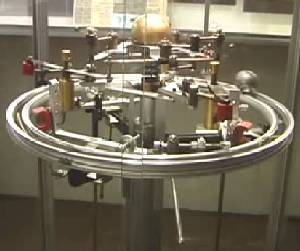 There are days when "Just keep moving" is my mantra.
There are days when "Just keep moving" is my mantra.Those days when forward progress bogs down on a project, when nothing on the To-do List gets addresseed but 10 more things get added to it (before lunch), when the handy and make-your-job-and-life-easier technology fails to live up to its hype and my expectations.
But lately I've been busy with a lot of stuff -- household chores, projects at work, obligations for my kids, finish the taxes, car repairs, class prep for a course I'll be teaching soon, this-that-and-the-other-thing stuff. I haven't gotten much fiction writing accomplished except for some short passages, anywhere from 150 to 800 words. But I've been taking care of some other writing assignments and moving them off the To-do List, so keeping moving sometimes pays off and keeps one from sinking down in the dumps.
In fact, while I was waiting for an appointment the other day, I wrote about 500 words for the opening of a new western short story. I felt pretty good about that. (By the way, the photo accompanying this post is purportedly a perpetual motion machine: The Finsrud Wheel, a moving sculpture built by Norwegian artist Reidar Finsrud.)
Some recent activity:
"Mangling the works of Jules Verne" is my latest contribution at Amazing Stories Magazine. You can find it here.
"Iron Men and Silver Stars: Donald Hamilton's western anthology" is my most recent post at The Spur & Lock Mercantile, my blog for All Things Western.
"Budapest Then and Then: Jules Verne and Robert B. Parker" is a review of two books from two very different authors. This is my most recent post at The Pulp Rack blog.
That's not so bad for a week's amount of extracurricular productivity.
So, if you're feeling bogged down, don't fret. You're not alone. Just keep moving.
Published on March 17, 2013 11:57
February 22, 2013
Who was that masked man?
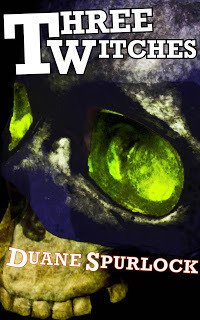 . . . A question that has rung down through the ages. Or at least through a few generations, starting with that youthful audience who hung onto every trumpet fanfare and galloping hoof strike and word that reverberated from the monaural speaker of the radio cabinet when those thrilling days of yesteryear were recalled on The Lone Ranger Show.
. . . A question that has rung down through the ages. Or at least through a few generations, starting with that youthful audience who hung onto every trumpet fanfare and galloping hoof strike and word that reverberated from the monaural speaker of the radio cabinet when those thrilling days of yesteryear were recalled on The Lone Ranger Show.The masked man of present concern is El Tigre Azul, luchador hero of my 25 thousand-word adventure story, Three Witches.
More than one person has asked me, "Why would you write a story about something you know so little about?"
My question back: "Do you mean fighting cocks?"
"No, masked Mexican wrestlers."
My reply: "Why not?"
The luchadores who are heroes in my story aren't necessarily the sort of luchadores one sees on TV wrestling matches. My luchadores were inspired by the heroic luchadores who battled vampires, witches, Aztec mummies, werewolves, and all kinds of bad evil critters in a series of Mexican films produced from the late 1950s through the 1970s. Many of these appeared in badly dubbed versions produced for the U.S. drive-in market, and later were shown on cable television stations during the late 1970s and early 1980s.
The dubbed versions have a camp quality that initially difficult to see past. But at the heart of these movies are daring heroes slugging their ways through dire situations.
And really, on any given day, slogging through another day of drudgery, do you feel so different from that? (Okay, maybe you don't wear a mask.)
The private eye of countless crime novels has been described as the evolution to the contemporary mean streets of the archetypal cowboy from literature, a romantic knight errant of the prairies and Wild West.
The luchador might be said to be an amalgam of both.
Why not? Hammett's Continental Op in Red Harvest plays the role of a lone-riding cowboy -- not so different from Clint Eastwood's
I play up a bit this cowboy connection for the luchadores in Three Witches: While the three heroes -- El Tigre Azul (The Blue Tiger), El Puño de Bronce (The Fist of Bronze), and Doctor Zaius -- await the arrival of the criminals who are trying to kill them (a gang known as The Criminal Body), the luchadores talk about how they feel they are in a John Wayne movie . . . either Rio Bravo or El Dorado. They can't recall which is which, because the two movies are very similar:
<<
“Sarah Winchester's unending house!” Dr. Zaius exclaimed. “I feel like I'm in Rio Bravo. Or El Dorado. I don't remember which.”
El Puño de Bronce dropped into a chair. “What are you talking about, Doctor?”
“A John Wayne movie. John Wayne and his buddies are under siege in a western town, waiting for the gang of bad guys to attack.”
“Ah. Which movie was that? Rio Bravo or El Dorado?”
“Well, both of them, really.”>>
Later, the characters resume their conversation about the movies:
<<
Beside the hotel on the left was a tailor. Its door and shutters remained closed. To the right of the hotel was a funeraria. The mortician stepped out his door. He was dressed in black from head to toe. He looked at the men sitting in the street around a small table, nodded, smiled, rubbed his hands together, and disappeared inside his business.
El Tigre chuckled. “Maybe this is a western.” He looked at El Puño. “Do you feel like John Wayne?”
The man in bronze tapped ash from his Gran Corona. “I feel more like Gabby Hayes.”>>
Back to the original question: Who was that masked man? He's the hero who moves us all to find that bit of hero in ourselves, each day, to deal with major problems and even the small aggravations that, piled together, and sometimes feel like a mountain on one's shoulders at the end of the day.
And to return to the second question -- "Why would you write a story about something you know so little about?" -- I'll say that Johnston McCulley wrote about Zorro, O. Henry wrote about the Cisco Kid, Fran Striker created The Lone Ranger, Willliam S. Gibson wrote millions of words about The Shadow. And I'll bet none of them brandished pistols or swords from the back of a flashing steed or the running board of a 1930s roadster, and probably none of them wore a mask for anything except a costume party.
But they wrote roaring good tales that keep readers coming back to their words, generation after generation.
That answer is good enough for me.
Published on February 22, 2013 18:12
February 9, 2013
Updates
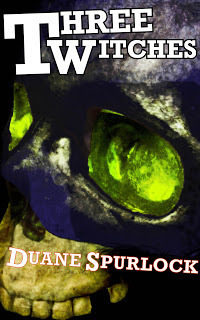 Thought I'd take a moment to let folks know about some updates.
Thought I'd take a moment to let folks know about some updates.New at The Pulp Rack: "The Scientific Sherlock Holmes by James O’Brien" . . .
You'll find it here:
http://pulprack.blogspot.com/2013/02/the-scientific-sherlock-holmes-by-james.html
Relatively new at The Spur & Lock: "Clay Randall's Amos Flagg--High Gun" . . .
You'll find it here:
http://spurandlock.blogspot.com/2013/02/clay-randalls-amos-flagg-high-gun.html
And before that, there's this post: "Strong stuff: Edge and the Piccadilly Western" . . .
You'll find it here:
http://spurandlock.blogspot.com/2013/01/strong-stuff-edge-and-piccadilly-western.html
And over at the newly relaunched Amazing Stories Magazine site, you'll find my first two contributions:
"Inoculate Against the Lurids: Language Is A Virus" at http://amazingstoriesmag.com/2013/01/inoculate-against-the-lurids-language-is-a-virus/
. . . and . . .
"Crackpots, Conspiracies, UFOs and Air War" at http://amazingstoriesmag.com/2013/02/crackpots-conspiracies-ufos-and-air-war/
Something for everyone!
Enjoy,Duane
Published on February 09, 2013 18:49
February 1, 2013
Inoculate Against the Lurids: Language Is A Virus
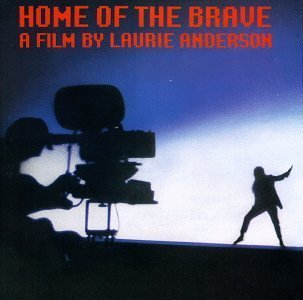 If that title looks confusing, I can only recommend that you visit the new Amazing Stories Magazine site and read my first contribution posted there. That is its title. Read on past that, and clarity should follow. (That's the intent, any way.)
If that title looks confusing, I can only recommend that you visit the new Amazing Stories Magazine site and read my first contribution posted there. That is its title. Read on past that, and clarity should follow. (That's the intent, any way.)You can find it here.
While you're there, be sure to check out the contributions from some of the many other fine writers. Lots of pop culture and genre-history brains gathered on the flight deck of a single star ship. It's a pleasure to be part of the ride.
Published on February 01, 2013 19:34
January 23, 2013
Rey recommends Three Witches
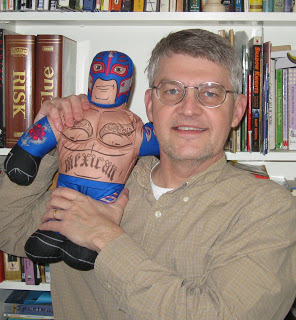 My new pal, Rey, recommends reading Three Witches.
My new pal, Rey, recommends reading Three Witches.If you are the owner of a dedicated eReader, you probably are wondering what to read next.
Or if you own a tablet, smart phone, or desktop or laptop PC, you can download an eReader app for free from a number of sites (for Amazon’s Kindle, Barnes & Noble’s Nook, Kobo, and others), so you can read from just about any device you may have available. And you’ll probably be wondering what to read next.
As I mentioned, Rey recommends reading Three Witches, a luchador adventure featuring El Tigre Azul.
A lot more folks have dedicated eReaders these days. Kobo declares it added 4 million sales of its device the second half of 2012.
The Telegraph reported that sales for "e-readers surged 45 per cent in the run-up to Christmas, as data from Neilsen BookScan indicated that sales of printed books fell by £74m. Total physical book sales of £1.5billion were also hurt by heavy discounting."
TechEye.net reported "E-book readers rose from 16 percent to 23 percent, while printed book readers declined from 72 percent to 67 percent."
The Motley Fool reports . . .
<< According to iSuppli, total e-book readers shipments grew from a mere one million worldwide in 2008 to ten million in 2010. Shipments hit a peak of 23.2 million units in 2011. But even then, tablets had already taken the lead over e-readers with shipments of 67 million units.
In 2012, iSuppli has forecast that sales will fall 36% to just 14.9 million units. Another drastic 27% fall is forecast for 2014 when shipments decline to 10.9 million units. The firm sees sales of only 7.1 million units by 2016 as the consumer trend toward a multifunctional device – the tablet – continues. >> Even if dedicated eReader sales drop, the call for ebooks for any number devices -- particularly tablets -- will not dwindle.
Take all those numbers together for Kobo, Nook, and Kindle. Is it a reasonable rough estimate to say at least 6 to 8 million more people started 2013 with eReaders than compared to 2012?
So, let's say you are one of those more than 6 million new eReader owners.
You need to read something.
My new pal, Rey, reminds you that he recommends Three Witches.
Where to find Three Witches: Kobo: click hereNook: click hereKindle: click hereSmashWords: click here A list of all my available books: click here Remember, Rey recommends! Rey Mysterio ®
TM copyright 2012 WWE
copyright 2012 Mattel
Published on January 23, 2013 17:08
January 21, 2013
Ignition! Amazing Stories launches
In a post a few weeks back, I described how the venerable science fiction magazine, Amazing Stories, was returning to existence in our reality.
It's back.
Here's the official press release:
Amazing Stories, the world's first science fiction magazine, is now open to the public.
Social Magazine Website Offers Nearly Sixty Writers and Social Networking For Fans!
Experimenter Publishing Company
Hillsboro, NH
January 19, 2013
AMAZING STORIES are just one click away!TM
The Experimenter Publishing Company is pleased to announce the reintroduction of the world's most recognizable science fiction magazine – AMAZING STORIES!Following the completion of a successful Beta Test begun on January 2nd, 2013, Amazing Stories is now open to the public. Fans of science fiction, fantasy, and horror are invited to join and encouraged to participate in helping to bring back a cherished icon of the field.
For the past several weeks nearly sixty fans, authors, artists, editors and bloggers have been producing articles on your favorite subjects – the literature of SF/F/H, its presentations in media such as television, film, poetry, literature, games, comics and much more.
All contents of Amazing Stories are free to the general public.
Membership is also free – and entitles members to participate in the discussion, share information and engage in many other familiar social networking activities.
Membership also represents a stake in helping Amazing Stories return to publication. The more members the site acquires, the faster Amazing Stories can become a paying market for short fiction.
Every genre fan now has a chance to help support the creation of a new market for the stories, artwork and articles they all love so much.
To visit the site and obtain your free membership, go to AMAZING STORIES , and don't forget to invite your friends too!
This reincarnation of Amazing Stories could not have happened without the generous support of Woodall Design LLC and the members of the Amazing Stories Blog Team:
Cenobyte, Karen G. Anderson, Mike Brotherton, Ricky L. Brown, Michael A. Burstein, Catherine Coker, Johne Cook, Paul Cook, Gary Dalkin, Jane Frank, Adria K. Fraser, Jim Freund, Fran Friel, Adam Gaffen, Chris Garcia, Chris Gerwel, Tommy Hancock, Liz Henderson, Samantha Henry, M.D. Jackson, Monique Jacob, Geoffrey James, J. Jay Jones, Daniel M. Kimmel, Peggy Kolm, Justin Landon, Andrew Liptak, Bob Lock, Melissa Lowery, Barry Malzberg, C. E. Martin, Farrell J. McGovern, Steve Miller, Matt Mitrovich, Aidan Moher, Kevin Murray, Ken Neth, Astrid Nielsch, D. Nicklin-Dunbar, James Palmer, John Purcell, James Rogers, Felicity Savage, Diane Severson, Steve H. Silver, J. Simpson, Douglas Smith, Lesley Smith, Bill Spangler, Duane Spurlock, Michael J. Sullivan, G. W. Thomas, Erin Underwood, Stephan Van Velzen, Cynthia Ward, Michael Webb, Keith West, John M. Whalen, Karlo Yeager, Leah A. Zeldes
For more information about Amazing Stories, please contact the publisher at
Experimenter@AmazingStoriesMag.com
It's back.
Here's the official press release:
Amazing Stories, the world's first science fiction magazine, is now open to the public.
Social Magazine Website Offers Nearly Sixty Writers and Social Networking For Fans!
Experimenter Publishing Company
Hillsboro, NH
January 19, 2013
AMAZING STORIES are just one click away!TM
The Experimenter Publishing Company is pleased to announce the reintroduction of the world's most recognizable science fiction magazine – AMAZING STORIES!Following the completion of a successful Beta Test begun on January 2nd, 2013, Amazing Stories is now open to the public. Fans of science fiction, fantasy, and horror are invited to join and encouraged to participate in helping to bring back a cherished icon of the field.
For the past several weeks nearly sixty fans, authors, artists, editors and bloggers have been producing articles on your favorite subjects – the literature of SF/F/H, its presentations in media such as television, film, poetry, literature, games, comics and much more.
All contents of Amazing Stories are free to the general public.
Membership is also free – and entitles members to participate in the discussion, share information and engage in many other familiar social networking activities.
Membership also represents a stake in helping Amazing Stories return to publication. The more members the site acquires, the faster Amazing Stories can become a paying market for short fiction.
Every genre fan now has a chance to help support the creation of a new market for the stories, artwork and articles they all love so much.
To visit the site and obtain your free membership, go to AMAZING STORIES , and don't forget to invite your friends too!
This reincarnation of Amazing Stories could not have happened without the generous support of Woodall Design LLC and the members of the Amazing Stories Blog Team:
Cenobyte, Karen G. Anderson, Mike Brotherton, Ricky L. Brown, Michael A. Burstein, Catherine Coker, Johne Cook, Paul Cook, Gary Dalkin, Jane Frank, Adria K. Fraser, Jim Freund, Fran Friel, Adam Gaffen, Chris Garcia, Chris Gerwel, Tommy Hancock, Liz Henderson, Samantha Henry, M.D. Jackson, Monique Jacob, Geoffrey James, J. Jay Jones, Daniel M. Kimmel, Peggy Kolm, Justin Landon, Andrew Liptak, Bob Lock, Melissa Lowery, Barry Malzberg, C. E. Martin, Farrell J. McGovern, Steve Miller, Matt Mitrovich, Aidan Moher, Kevin Murray, Ken Neth, Astrid Nielsch, D. Nicklin-Dunbar, James Palmer, John Purcell, James Rogers, Felicity Savage, Diane Severson, Steve H. Silver, J. Simpson, Douglas Smith, Lesley Smith, Bill Spangler, Duane Spurlock, Michael J. Sullivan, G. W. Thomas, Erin Underwood, Stephan Van Velzen, Cynthia Ward, Michael Webb, Keith West, John M. Whalen, Karlo Yeager, Leah A. Zeldes
For more information about Amazing Stories, please contact the publisher at
Experimenter@AmazingStoriesMag.com
Published on January 21, 2013 12:16
January 1, 2013
Unwrapping 2013
Happy New Year!
For New Year’s Eve, I wrapped up my writing and publishing activities for 2012.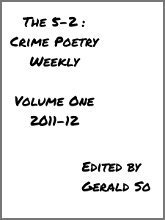 Actually, I left one out: I have a criminous Christmas haiku in Gerald So’s anthology that was released in October 2012: The 5-2, CrimePoetry Weekly Volume 1. Gerald compiled this from the weekly poetic posts to his crime poetry site, The 5-2. I like being in an anthology that includes a writer named Catfish McDaris.
Actually, I left one out: I have a criminous Christmas haiku in Gerald So’s anthology that was released in October 2012: The 5-2, CrimePoetry Weekly Volume 1. Gerald compiled this from the weekly poetic posts to his crime poetry site, The 5-2. I like being in an anthology that includes a writer named Catfish McDaris.
So, after that brief peek back at 2012, onward to 2013!I mentioned in the previous InterroBang post that I considered 2012 a building year. 2013, also, is a building year. My plan is to continue producing work in a variety of genres, and to add entries to the series I’ve launched.
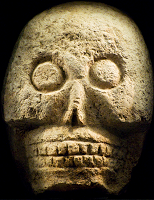 For instance, the next El Tigre Azul adventure, Two Monsters, picks up not long after the conclusion of Three Witches. And the second Shalimar Bang mystery tracks down what happened to Fred MacIsaac, who was mentioned in “The Dream Stalker.”I hope to publish at least one story about a new character, Bomber Jacquet. I have three stories about him in progress currently. His path will eventually cross that of Shalimar Bang.
For instance, the next El Tigre Azul adventure, Two Monsters, picks up not long after the conclusion of Three Witches. And the second Shalimar Bang mystery tracks down what happened to Fred MacIsaac, who was mentioned in “The Dream Stalker.”I hope to publish at least one story about a new character, Bomber Jacquet. I have three stories about him in progress currently. His path will eventually cross that of Shalimar Bang.
My big project this year is to complete the science fiction novel I’m working on with artist Mike Fyles, Space Detective.And I have a story to wrap up for an Airship 27 anthology this year. This is a neat project, and it's fun to work on.
I’ll be contributing to the Amazing Stories site, I’ve promised some work to Ed Hulse for his Blood’n’Thunder magazine, and I need to catch up on posts to my blogs.Somewhere in there I’ll be doing my day job that pays the bills, performing some duties for my church, helping with Boy and Cub Scout activities, and I may squeeze in a household chore or two.
It’ll be interesting to see how 2013 wraps up 52 weeks from now!
For New Year’s Eve, I wrapped up my writing and publishing activities for 2012.
 Actually, I left one out: I have a criminous Christmas haiku in Gerald So’s anthology that was released in October 2012: The 5-2, CrimePoetry Weekly Volume 1. Gerald compiled this from the weekly poetic posts to his crime poetry site, The 5-2. I like being in an anthology that includes a writer named Catfish McDaris.
Actually, I left one out: I have a criminous Christmas haiku in Gerald So’s anthology that was released in October 2012: The 5-2, CrimePoetry Weekly Volume 1. Gerald compiled this from the weekly poetic posts to his crime poetry site, The 5-2. I like being in an anthology that includes a writer named Catfish McDaris.So, after that brief peek back at 2012, onward to 2013!I mentioned in the previous InterroBang post that I considered 2012 a building year. 2013, also, is a building year. My plan is to continue producing work in a variety of genres, and to add entries to the series I’ve launched.
 For instance, the next El Tigre Azul adventure, Two Monsters, picks up not long after the conclusion of Three Witches. And the second Shalimar Bang mystery tracks down what happened to Fred MacIsaac, who was mentioned in “The Dream Stalker.”I hope to publish at least one story about a new character, Bomber Jacquet. I have three stories about him in progress currently. His path will eventually cross that of Shalimar Bang.
For instance, the next El Tigre Azul adventure, Two Monsters, picks up not long after the conclusion of Three Witches. And the second Shalimar Bang mystery tracks down what happened to Fred MacIsaac, who was mentioned in “The Dream Stalker.”I hope to publish at least one story about a new character, Bomber Jacquet. I have three stories about him in progress currently. His path will eventually cross that of Shalimar Bang.My big project this year is to complete the science fiction novel I’m working on with artist Mike Fyles, Space Detective.And I have a story to wrap up for an Airship 27 anthology this year. This is a neat project, and it's fun to work on.
I’ll be contributing to the Amazing Stories site, I’ve promised some work to Ed Hulse for his Blood’n’Thunder magazine, and I need to catch up on posts to my blogs.Somewhere in there I’ll be doing my day job that pays the bills, performing some duties for my church, helping with Boy and Cub Scout activities, and I may squeeze in a household chore or two.
It’ll be interesting to see how 2013 wraps up 52 weeks from now!
Published on January 01, 2013 10:28



